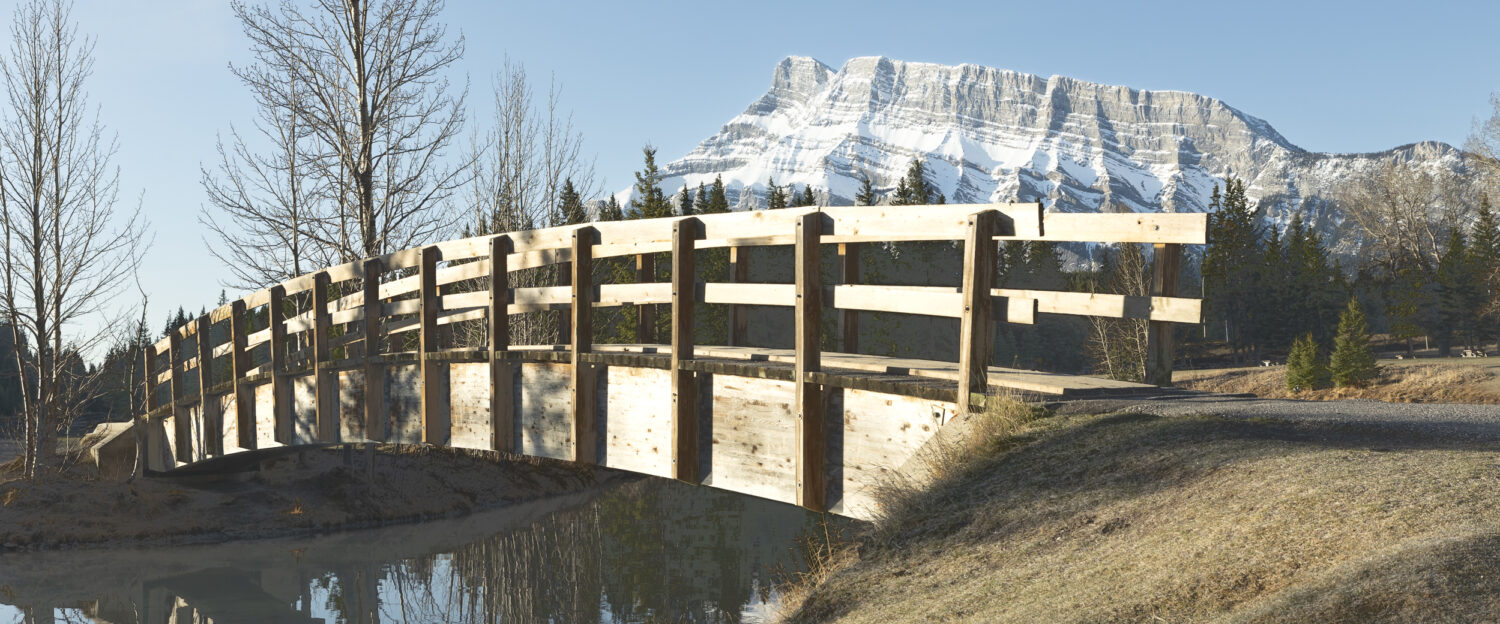Many iconic scenes from the Canadian Rockies feature the railroad. Building of the transcontinental railroad was a seminal event in Canadian history and its construction through the Rockies one of the great engineering feats of its time. Its builders, Donald Smith, Cornelius Van Horne, Lord Mount Stephen and many others are historical figures and its landmarks, particularly those in the Rocky Mountains are national icons. The Kicking Horse Pass, Rogers Pass, the Spiral Tunnels, Hell’s Gate Canyon and Craigellachie (site of the driving of the Last Spike) all evoke strong images of our heritage.
Among the lesser known of these landmarks is Morant’s Curve, a bend in the railroad just east of Lake Louise. It gained attention through the pictures of Canadian Pacific Railroad photographer, Nicholas Morant. He was a CPR photographer for most of his 50 year career, retiring in 1981. Morant’s Curve is best known to photographers and railroad enthusiasts.
I returned there yesterday with friend and photographer, Greg Bourque. It was a brilliant winter day, warm and sunny with the stunning backdrop of the Lake Louise area very prominent. We set up promptly and then waited patiently for a train to come along. We passed the time easily, chatting with photographers and other visitors and just enjoying the surroundings. I took this first picture while waiting. It’s a great scene, despite the absence of a train. It features the Bow River, the curve (of course) and three prominent peaks that border Lake Louise: Mount Fairview, Mount Whyte and Mount Niblock. The band of cloud was dissipating as the day warmed, leaving behind the strip of hoar frost you see on the trees beneath.
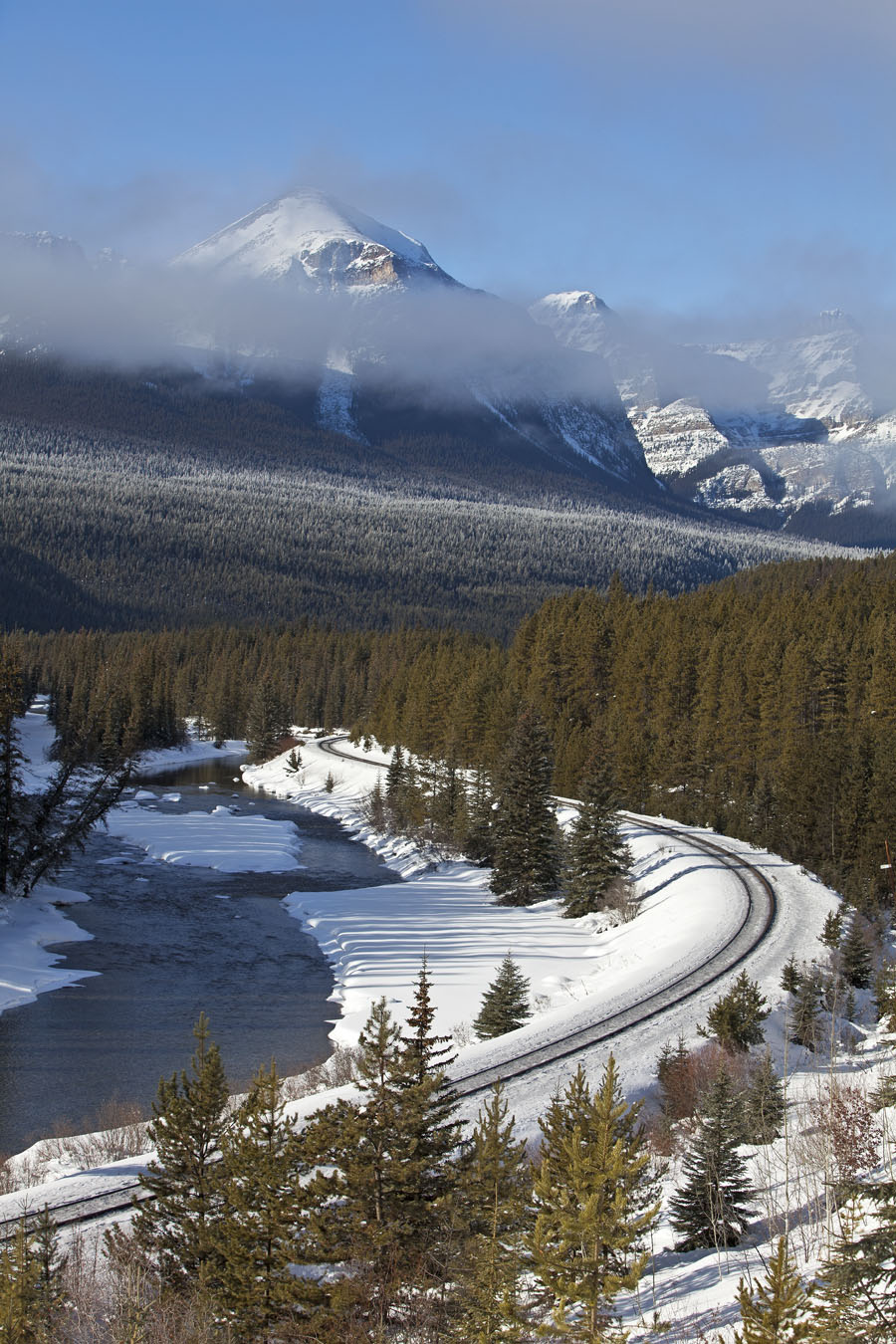
I decided to return to the car to get an item of equipment and sure enough a train appeared while I was absent from my camera. I was able to return in time to get this next photograph of a freight train rounding the curve. This wider angle offers a more expansive view of the background scenery and the numerous peaks that surround Lake Louise.
Both scenes were taken using my 24 mm Tilt-Shift lens. I used aperture settings of f6.3 to f8.0 and ISO settings of 100 and 200. With the brilliant light, I was easily able to get a shutter speed of 1/800 sec to “freeze” the motion of the train.
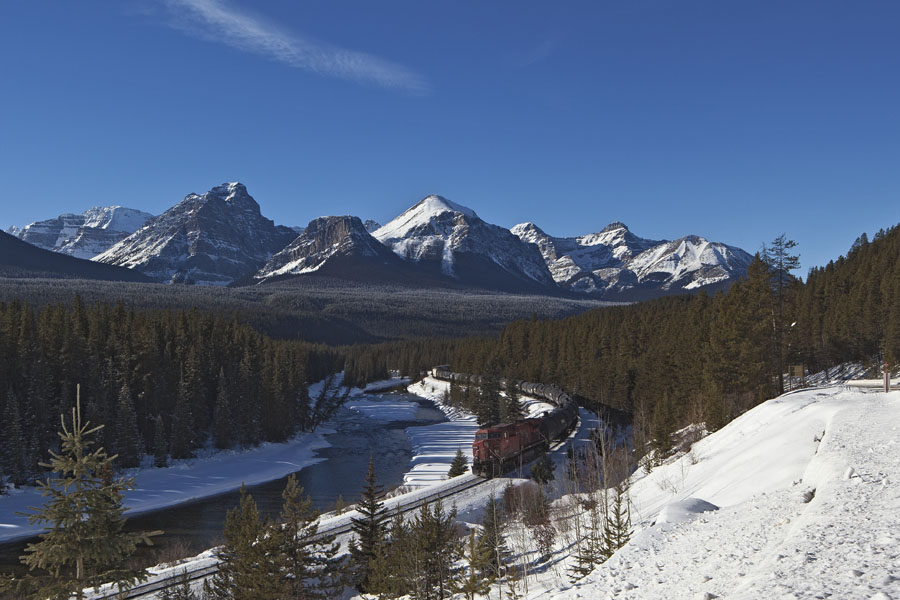
Following the departure of the train, we decided it was time to start homeward. We realized we could capture a few more shots along the way home and chose to stop near the junction of the Trans Canada Highway and the Bow Valley Parkway, near Banff. Our day of “working on the railroad” was not yet complete. We were able to set up very close to the tracks and I captured a series of shots as CP9366 and its file of cars zoomed passed.
The first picture shows the train approaching as it rounds yet another bend in the Bow River. With an aperture of f8.0 and a shutter speed of 1/125 sec, I was able to get this crisp image of the train as it bore down upon us.
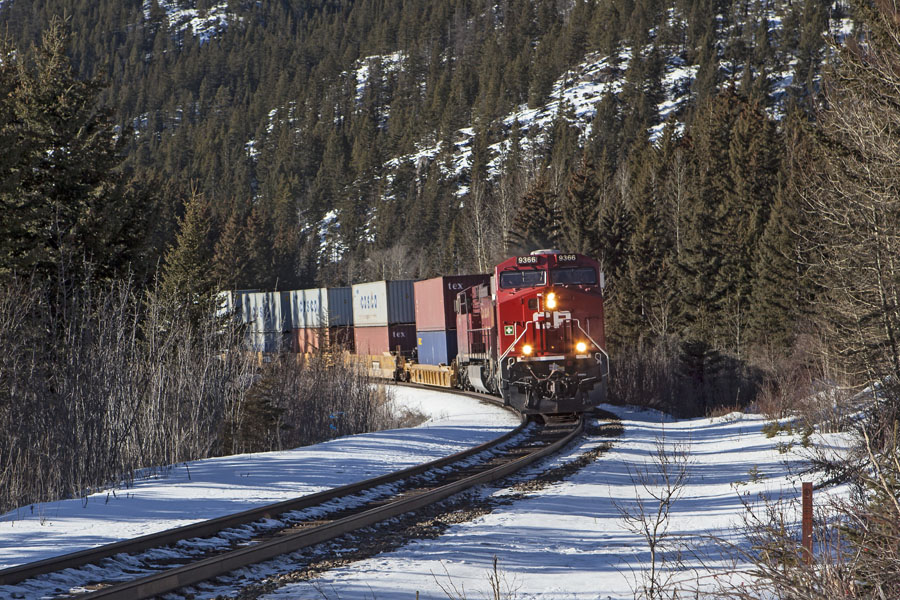
As it blasted past, the locomotive’s speed relative to the camera lens’ position was much greater. At this point, I had reduced the aperture setting to f16, and aided by the shadow created by the train, the shutter speed dropped to 1/13 sec., creating the blurred sense of motion. As you look further to the left, down the length of the train, its image becomes sharper. That’s because the motion of those cars relative to the camera lens is much less and does not get blurred a perceptible amount.
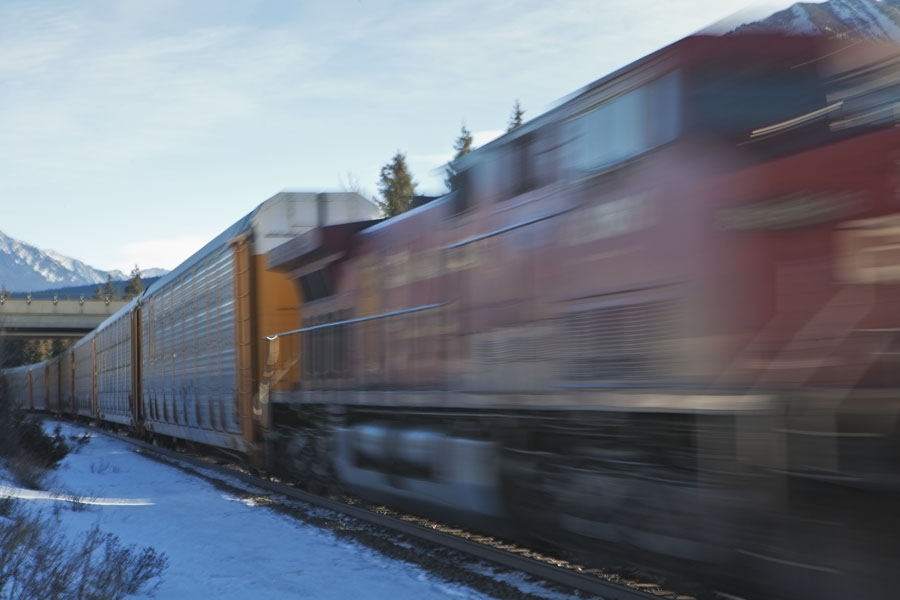
That was it. We went home, satisfied with a good day “working on the railroad”.
